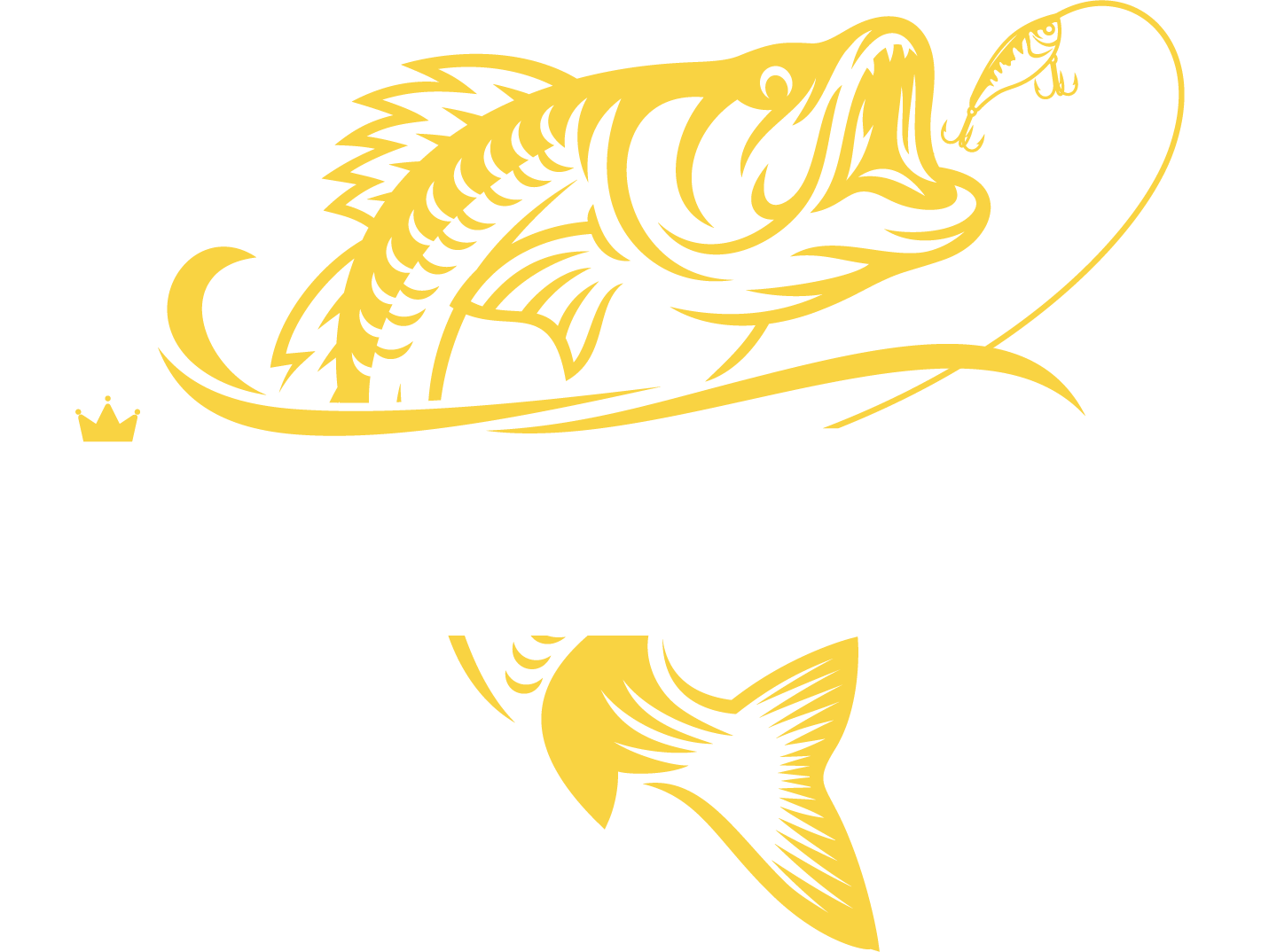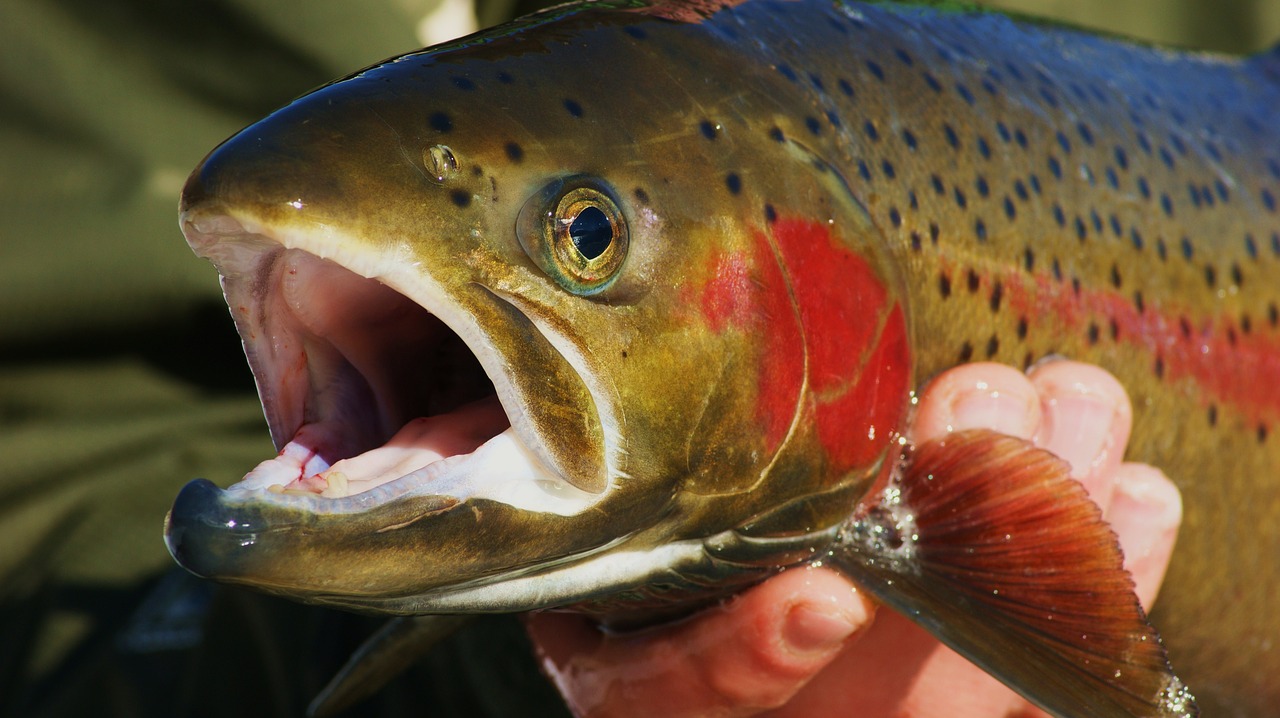Think like your prey, and there you will find its vulnerabilities.
This is especially true for a finicky fish, like the trout, that comes up to feed only under certain conditions. From my years of experience as an avid angler, I have had the most success with catching trout when the water is at a comfortable temperature.
As a rule of thumb, I find that the ideal time to catch trout is when the air temperature is pleasant for me — that is, neither too hot nor too cold.
What Time Of Day Is Best For Trout Fishing?
In other words, freezing or scorching weather is a sign that the trout will likely stay low and hunt below the surface. At the same time, trout delight in feeding during early mornings in the summer, when the water has cooled down through the night. On the other hand, late winter mornings are ideal for trout to come up for their feed. Once the sun’s warmth rejuvenates the surrounding ecology and the insects start flying about, the predator fish swims upwards to find food floating on the surface.
The presence of bugs, the season, and the weather conditions in your area — all have a role to play in deciding the best time to spot trout during the day. Needless to say, your fishing tactics have to be adjusted according to the trout’s feeding strategies and behavioral patterns. Although it may sound complex, the good news is that trout is available all year round.
Read on and follow some of the tips and tricks I’ve got up my sleeve when it comes to trout fishing. Rest assured, these have helped me successfully catch delicious trout for more than a decade!
What factors influence trout behavior during the day?
By now, you may have already guessed that many variables decide the best time of the day to catch trout. For instance, some anglers swear by fishing during dawn for optimum results, whereas others prefer fishing under the moonlight.
Interestingly, both and neither could be wrong. Anyhow, it is far more essential to consider the season, regional temperatures, fishing technique, and other factors, such as the species of trout and bait being used. However, this section will focus only on three significant factors to help you decide when to plan your fishing trip.
Checking The Temperature
For starters, I witnessed the most active feeding period of trout when water temperatures were between 38 to 70 degrees Fahrenheit. Moreover, since trout are cold-blooded, you may assume that if the air temperature is either too hot or cold for you, the same will apply to the fish.
With that in mind, always check the temperature before heading out. And, if the mercury hits anywhere close to freezing point, aim to reach the fishing spot during the late morning. Leave it to the mid-day sun to warm up the water, and stimulate the surrounding insects to flutter around.
Once the trout becomes aware of the movement of bugs, it will readily come up to the surface for feed. At this point, waste no time in taking advantage of the situation and lower the bait.
On the other hand, during the spring or summer, when temperatures hover around 70 and 80, it is best to reach the fishing spot as the sun is coming up. For a better idea, use the following table as a reference; the given average air temperatures correspond to the best time for trout fishing.
- Between 34 to 60 degrees Fahrenheit: 12 p.m. to 5 p.m.
- Between 61 to 70 degrees Fahrenheit: 10 a.m. to 1 p.m.
- Between 71 to 80 degrees Fahrenheit: 8 a.m. to 11 a.m.
- Between 81 to 89 degrees Fahrenheit: 6 a.m. to 10 a.m.
Finding Shade
A closer look at the trout will reveal that they lack eyelids, and their pupils don’t dilate. In other words, trout cannot see well under harsh sunlight, but they do well during dawn and dusk when the sun’s rays are diminished.
With that being said, it is advisable to look for shaded or cloudy areas during a sunny summer day to catch trout that are seeking respite from the brightness. In fact, gear up with a pair of boots as you may have to wade through muddy waters.
On the other hand, they should thrive under the dim lights of dusk and dawn — theoretically speaking. However, taking weather conditions into consideration, trout fishing at these times may be a hit or a miss.
And, the same applies to overnight fishing trips. Although trout struggle to see their prey at night, some anglers find that a moon-lit night has brought them frequent success.
Avoiding Competition
As the common saying goes: there are plenty of fishes in the sea. But, it would be best if you didn’t take the chance anyway. Be an early bird and increase your chances of success before the weather gets warm and seasoned anglers start flocking to popular trout fishing spots.
Moreover, an upcoming spring season means thicker grass that lowers visibility. And, not to mention how the warmer months are generally accompanied by receding water levels that hurt your chances, no matter trout or bass.
Conclusion
To reel it in, scientific research and planning ahead make for a successful trout fishing season.
It is a complex sport, but many anglers agree that it is a rewarding experience for the same reason. Moreover, trout feed all around the year, from dusk till dawn — just as long as its food is available. With that being said, there is ample time to study and, hopefully, outwit this fish!
Lastly, don’t forget to add your own tips in the comment section!

Niels Thomas is a wildlife expert and fishing fanatic that works with major fishing brands like Deeper Sonar, Abu Garcia, Berkley, PENN, BassPro and Pure Fishing. Through sharing the best fishing tips, tricks, gear reviews, locations and much more he hopes to inspire fishing fanatics to start their own journey towards becoming the King of the Catch!

